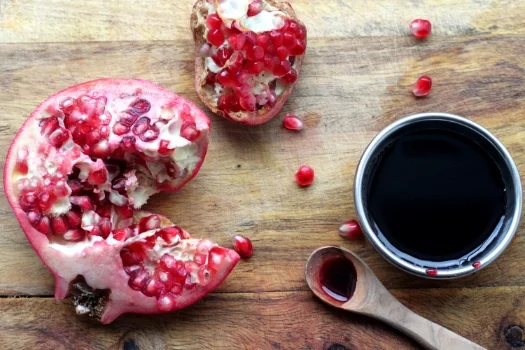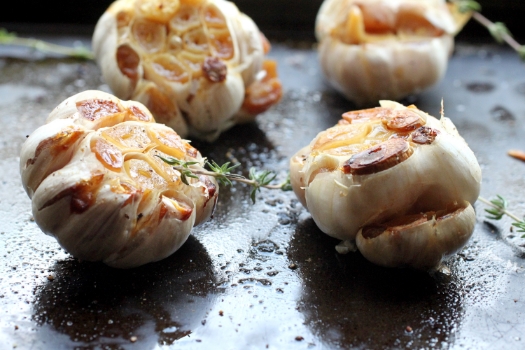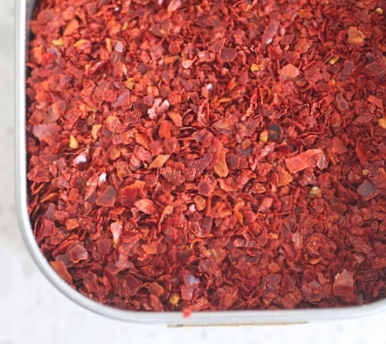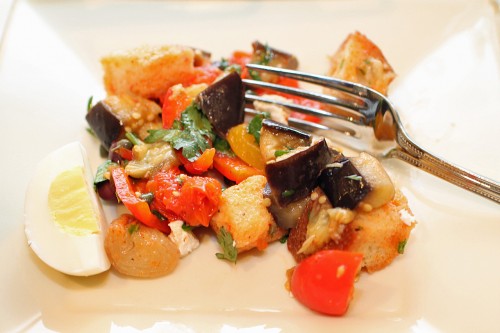MY PANTRY ESSENTIALS
Ok, so admittedly this isn't your typical pantry! While there are definitely elements of what you need to cook great food - fat, salt, acid, spices - my essentials here are what I personally use to take my food to the next level. Some of these are basic building blocks (roasted garlic, cultured butter), others are my preferences to the traditional (harissa for chili paste, sherry vinegar rather than, say, balsamic) and then some are unique ingredients that have extreme versatility and use (pomegranate molasses, za'atar). So let me do a little explaining to share why when you come to my kitchen, you will always find these ingredients, and how they can add to your own culinary arsenal...
POMEGRANATE MOLASSES
The word "molasses" always brings to mind the dark, sticky, by-product of the sugar process, but, in other parts of the world, the flavor of peak season fruit is captured as fruit molasses. Fruit molasses (pomegranates, figs, grapes, dates, etc) is made by cooking down fresh juice until it reduces to a syrup - I actually show how to make your own in my cookbook. Pomegranate is one of my favorites because it has that beautiful sweet flavor coupled with a nice tart bite. For me, a good pomegranate molasses is like a great balsamic vinegar - fantastic in vinaigrettes, a beautiful marinade and sauce for chicken or ribs, and just as delicious drizzled over berries or ice cream. I never run out of ways to use this stuff (pom martini anyone?) and always have a bottle or two on hand.
HARISSA
Harissa is my absolute, go-to chili paste, though I still have love for sriracha! I make a homemade version myself, and it has my ideal heat level (not scorching) and flavor. This North African sauce has gotten really popular, and you can pretty easily find a bottle at most specialty stores and gourmet grocers. The uses are endless - incredible as a roast chicken marinade, mixed with honey as a sweet and spicy salad dressing base, perfect for a spicy mayo, mixed with cheese and stuffed into olives, and any other way you usually use hot sauce. Each version of harissa has its own unique spice blend, so what's nice is it adds complexity to simple dishes (without much work).
ROASTED GARLIC
I'm like literally giving away all of my secrets. I roast garlic every week and use it wherever I would normally use raw garlic. It's just garlic, only waaaay better. Roasting garlic (which is as simple as cutting off the tops, slathering with oil and sprinkling with salt, wrapping in foil and roasting at 400° F for an hour) takes garlic to another level - another deeper, nuttier, less sharp, caramelized level. You could eat the cloves as they are, and they can be mashed right into a paste. So rub them onto a steak before grilling, make the best garlic bread of your life, give your soups or stews new depth, throw them into mashed potatoes, mac and cheese, rice, your morning eggs...you get it.
SHERRY VINEGAR
If I were to have a house vinegar, this would be it. I'm pretty sensitive to extremes of flavor - too salty, too sweet, and, in the case of vinegars, too acidic. Sherry vinegar has acidity, but it's not overbearing. It's balanced with a honeyed sweetness and complexity of flavor, so it adds more than face-puckering tartness. There are three types - vinagre de Jerez, vinagre de Jerez Reserva and vinagre de Jerez Gran Reserva (in order of how long the vinegar has been aged). The middle one is what I use day-to-day - to deglaze my pan-roasted brussels, drizzled on my spiced, butternut squash soup, for a crazy beurre blanc. The Gran Reserva is perfect to finish a piece of fish or for a cheese plate - it's a bit more expensive but you only need a few drops to add incredible flavor.
ALEPPO CHILI FLAKES
Aleppo chilies are my all-around favorite chili flake for cooking, and I've talked about them in depth in the past. Aleppo chilies come from Syria and are comparable in heat and flavor to ancho chilies - they're fruity, moderately hot, with smoky undertones that come from a process of being sundried. The heat is immediate, and it lingers a bit.
CULTURED BUTTER
What IS the deal with cultured butter you may be asking? What you generally find in the refrigerator aisle of the grocery is basic butter, cream that has been churned into a solid, sometimes with the addition of salt. But back in the day, that cream used to sit a bit, ferment, grow a bit of bacteria before being churned, and the result was slightly tangy, nutty, rich cultured butter. Some small companies are now producing this old-school butter (sometimes called "European-style"), and it's just, frankly, better butter. The flavor is amazing (kind of like that ideal, butter taste), but also, it's a bit higher in fat, which is what you want for baking to produce tender, fluffy cakes and biscuits.
ZA'ATAR
Za'atar is my stuck-on-a-desert-island-and-can-only-bring-one-spice-blend choice. To me, it's like a more interesting Herbes de Provence - the basic blend has dried za'atar (or thyme), sesame seeds, and sumac, and because of these, it is at once herbaceous, nutty and tart. I make my own blend, the simplest version (the one in this compound butter), because it allows me to layer in other flavors as I see fit, but the store-bought stuff is still amazing. Again, you will always see a jar of this in my pantry because I go through it - for my weekly roast chicken, on my garlic bread, sprinkled on a salad or roasted veggies, mixed with a bit of oil as a dip for flatbread, in my aioli. Once you start using za'atar, you kind of start to wonder how you seasoned food before you had it. It's that good.
TAMARI
Tamari is your upgrade to soy sauce. Both are made from fermented soy beans, but soy sauce generally comes from a mixture of soy beans and roasted wheat. Tamari, on the other hand, is the by-product of miso and little to no wheat is used in the process (making it a great, gluten-free option). The main differences are in texture and taste, with tamari being a bit thicker, richer, smooth and less salty. This is an easy switch.
MEXICAN CHOCOLATE
Yet another ingredient I keep in my pantry is Mexican chocolate - thick, sugary-cinnamon tablets of sweet dark chocolate. That should be reason enough for why this chocolate is included on my list because it is sooo easy to snack on this stuff like it's going out of style. But beyond straight consumption, I also love cooking with it - for killer hot chocolate or a mocha, in a simple pot de crème or chocolate sauce, for a chocolate bread pudding, shaved on top of ice cream, baked into a cake. It's a bit drier than traditional chocolate, so it works well when combined with a liquid like cream, and when baking, make sure to up the moisture factor with sour cream, buttermilk of crème fraiche.
TRUFFLE SALT
There are not too many things that rival the flavor of truffles. When my husband and I first met and we went grocery shopping, he nearly fell over when he saw what truffle oil costed. But after one truffled meal, I caught him on his own truffling take-out!! I certainly don't advise that, but I will say that as of late my taste buds have been preferring truffled salt over the other methods. It's expensive, but a little goes a long way here. It's great to finish a piece of steak or fish and adds that truffled flavor without the synthetic flavors you can often find in the oils and butters. When my girlfriends come over, I put this to great use and make a homemade, truffle-honey butter popcorn...
MAPLE SUGAR
Lately, my cooking sugar of choice has been maple sugar. It's a sugar from the maple tree that tastes a lot like the syrup; it's also unrefined, full of antioxidants and minerals and has a lower glycemic impact. I use a bit less than white or brown sugar when I'm baking, and I think the flavor is out of this world.
PIMENTÓN DE LA VERA (SMOKED SPANISH PAPRIKA)
Cooking requires a skillful layering of flavors, and this spice gives heat, smoke and a bit of bitterness. Peppers from the La Vera region in Spain are oakwood-smoked and dried before being milled, and the spice comes in three heat levels so you can choose what works for your palate. When I want to add smokiness without going through the effort of physically smoking something, this ingredient gets thrown in - to almost all of my dry rubs, to amp up a gratin, my shakshouka, and even pasta (bacon-less carbonara!).
Hope you guys enjoy this exotic pantry - would love to hear from you what makes your list!
























